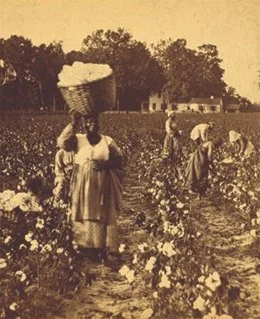Timeline of Fashion, Textiles, Wool Farming, and Manufacturing in America
As we bring in the new year, let’s look back at where we came from.
1600s–1700s: Early Colonial Era
- 1600s: Colonists rely on imported textiles from Europe due to limited local production. Wool, linen, and homespun fabrics are primary materials. Sheep are introduced to the colonies for wool farming, laying the groundwork for domestic textile production.
- 1700s: Small-scale wool farming develops in New England. Wool is carded, spun, and woven by hand, often within family households.
1780s–1820s: Industrial Revolution
- 1789: George Washington's Inauguration Outfit: Washington wears a suit made of American broadcloth (a fine wool fabric) for his first presidential inauguration. The wool is sourced and processed domestically, symbolizing support for American independence and industry. The suit, crafted by Daniel Hinsdale, highlights the early potential of U.S. wool farming and textile production.
- 1789: Samuel Slater established the first successful cotton-spinning mill in Rhode Island, but wool mills began emerging in the same period.
- 1813: The Boston Manufacturing Company introduces integrated mills for cotton, and similar developments occur in wool processing mills.
- 1820s: Wool farming expands, particularly in the Northeast, as demand for natural fibers grows.
1830s–1860s: Expansion of Wool and Cotton
- 1830s: Wool farming became a staple of American agriculture, with Merino sheep imported to improve fiber quality. Wool mills proliferate alongside cotton mills in industrial centers.
- 1840s–1860s: Wool farming expands westward as settlers bring sheep to new territories. This period sees a rise in the production of woolen fabrics for blankets, uniforms, and garments.
- Civil War (1861–1865): Wool farming and textile production surge to meet military demand for uniforms and blankets.
1870s–1920s: Rise of Ready-to-Wear and Immigration
- 1870s: Wool farming remains a critical agricultural activity, with innovations in shearing and wool grading. Ready-to-wear clothing, including woolen coats and suits, emerges in urban markets.
- 1890s–1920s: Immigrant labor fuels urban garment manufacturing. Wool remains a popular fabric for tailored suits, coats, and industrial wear.
1930s–1940s: Great Depression and World War II
- 1930s: Wool farming faces challenges during the Great Depression, but the durable and versatile nature of wool helps sustain its demand.
- 1940s: During World War II, wool is a strategic material, used for military uniforms, overcoats, and blankets. The government incentivizes wool farming to meet wartime needs.
1950s–1970s: Postwar Boom and Globalization Begins
- 1950s: Wool remains a popular choice for tailored menswear, but synthetic fibers like polyester gain market share due to affordability and ease of care.
- 1970s: Wool farming declines as synthetic alternatives and globalization reduce domestic textile production.
1980s–1990s: Fast Fashion and Outsourcing
- 1980s: Wool farming faces competition from synthetic materials, and the fast fashion industry prioritizes low-cost, high-volume production over quality natural fibers.
- 1990s: Efforts to revive wool farming and American-made textiles emerge, driven by niche markets for high-quality, sustainable fashion.
2000s–Present: Sustainability and Revival of Wool
- 2000s: Small-scale wool farming experiences a resurgence, supported by the “Made in America” movement and demand for sustainable, renewable fabrics. Farms in states like Wyoming become hubs for high-quality wool.
- 2010s: Sustainable fashion brands emphasize the benefits of wool, such as its biodegradability, breathability, and durability. Companies like American Woolen promote U.S.-sourced wool fabrics.
- 2020s: Wool farming becomes central to the slow fashion movement. Documentaries and campaigns showcase wool’s journey from farm to finished garment, celebrating its sustainable and ethical production. Brands partner directly with wool farms to ensure quality and traceability.
Matthew Banever, owner of Bards and Jacob Harrison Long, owner of American Woolen.




